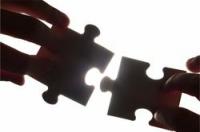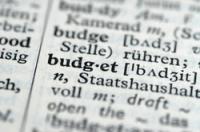VIDEO: Use a tablespoon as a measuring spoon
Keep the following in mind when using a tablespoon as a measuring spoon
- The tablespoon does not have a standardized size, it can be used as a measuring spoon, but you only have to assume approximate measurements. Depending on the shape and curvature, you can absorb different amounts of substances with the tablespoon.
- You can measure the amounts of both powdered and ground materials with a tablespoon. You also have the option of absorbing liquids in milliliters with a tablespoon.
- In addition, you can vary the quantities with the tablespoon, as you can use either a level or a heaped tablespoon as the unit of measurement.
- The level tablespoon will hold as much of a fabric as it will remain on the tablespoon after you have smoothed it out with the back of a knife.
- With a heaped tablespoon you absorb the maximum amount of a substance that the tablespoon can hold without something falling off.
You urgently need to bake or cook something, but there is no measuring cup far and wide ...
How to measure grams - indications with a tablespoon
When specifying weight in grams using a tablespoon, you have to keep in mind that not all fabrics that you want to measure have the same consistency. As a result, the same amount of different fabrics does not correspond to the same weight. One level tablespoon takes up an approximate volume of 15 cubic centimeters (15 cc) and is equivalent to the amount of three level teaspoons. You can take the following quantities into account, using approximately one tablespoon as a measuring spoon:
- A level tablespoon of cocoa is approx. 5 g. If you take a heaped tablespoon of cocoa, this corresponds to about 12 g.
- If you want to measure oat flakes, the level tablespoon corresponds to an amount of 8 g. With a heaped tablespoon you take approx. 18 g.
- Cornstarch, flour and breadcrumbs have roughly the same density and accordingly the same amount on the tablespoon. With one level tablespoon you take up about 10 g, if you add the tablespoon, this corresponds to an amount of 20 to 22 g.
- Sugar and semolina are denser, here the level tablespoon corresponds to an amount of 12 g, the heaped tablespoon to an amount of 25 g.
- Also salt and rice you can measure with a tablespoon instead of a measuring spoon. You have deleted a quantity of approx. 15 g, heaped up to 33 g.
- Butter has the greatest density, which is why the weight of the butter for one level tablespoon is also 20 g. You should not take a heaping tablespoon of butter into account as a quantity, as this will be far too imprecise. Butter can be piled high on the tablespoon without sliding down.
You can also measure the amount of liquid with the tablespoon
Please note this approximate quantity for liquids: 1 tablespoon corresponds to 10 ml, this is 1 cl. You can convert all other quantities accordingly:
- 1/8 liter is 125 ml, which corresponds to an amount of 8 tablespoons.
- 1/16 liters are approx. 62.5 ml, this corresponds to an amount of 4 tablespoons
- You can continue these quantities as you wish.
Practical use of the tablespoon as a measuring spoon
Do you want one cake then proceed as follows:
- If you are measuring 350 g of flour, take a tablespoon and really pile it up as full as you can. Then count 4 full tablespoons per 100 g of flour and finally add 1 more tablespoon.
- When specifying sugar, you really only take 4 heaped tablespoons per 100 g, because the density of sugar is higher than the density of flour.
- Do you want 100 ml milk then add 6 to 7 full tablespoons of milk.
These indications are proven, but you also need a good sense of proportion if you want to use the tablespoon as a measuring spoon.


